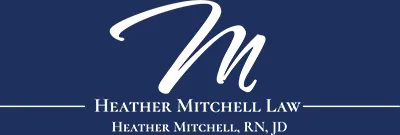Ashish K. Jha, MD
University of California, San Francisco School of Medicine
Bradford W. Duncan, MD
Stanford University School of Medicine
David W. Bates, MD, MSc
Harvard Medical School
Fatigue may contribute to the human error component of medical errors.1–3 Hospitals function around the clock, which necessitates shift work for many personnel. Physicians, especially those in training, typically work long hours and are often sleep deprived. 4 Personnel who work during evenings and at night experience disruptions in circadian rhythms, which may aggravate fatigue. Although little research has focused specifically on fatigue in hospital personnel and its relationship to medical error, studies outside the medical field demonstrate the intuitive link between fatigue and degradation in performance and suggest some safety practices that may be adopted in medicine. Although both acute and chronic fatigue may have detrimental effects on the health of medical practitioners,5–7 this chapter focuses on fatigue’s direct effects on patient safety. We review the literature on problem sleepiness among medical personnel, its impact on performance, and interventions to address sleep deprivation: limiting work hours, changes in shift scheduling, napping, and pharmaceutical aids. Although beyond the scope of this chapter, factors that contribute to fatigue beyond sleepiness, such as job stress and work load, should be considered as part of a multifaceted strategy to combat fatigue.
Fatigue and sleepiness may affect patient safety in several ways. Physicians and nurses need good attention, sound judgment, and often quick reaction time, especially in emergency situations. Whether evaluating an electrocardiogram for signs of myocardial ischemia or monitoring a patient during general anesthesia, degradation of attention, memory, or coordination may affect performance and lead to adverse events. Research suggests that sleep requirements and patterns are idiosyncratic, with wide variation across populations. In order to design interventions that will effectively decrease or prevent these events, it is important to understand the signs, prevalence, and impact of sleep deprivation and problem sleepiness.
Sleep Deprivation
Individuals differ in their optimal sleep requirements. Most sleep experts agree that adults typically need between 6 and 10 hours of sleep per 24-hour period, with most people requiring approximately 8 hours of sleep per day.8,9 When adults get less than 5 hours of sleep over a 24-hour period, peak mental abilities begin to decline. 2 For short periods of time (2-3 days), adult who get 4 hours of sleep can function reasonably well, but below peak levels. 2 However, even with sleep deprivation of just a couple of days, slower response times and decreased initiatives are observed. 10 After one night of missed sleep, cognitive performance may decrease 25% from baseline.11,12 After the second night of missed sleep, cognitive performance can fall to nearly 40% of baseline. 12
With ongoing sleep deprivation (getting 2 to 3 hours less sleep than optimal), people develop a sleep debt. 2 If the sleep debt continues over 5 to 10 days, they are rarely maximally alert and at some point general performance, and particularly cognitive performance, become verifiably worse. Sleep debt also leads to slower response times, altered mood and motivation, and reduced morale and initiative. A meta-analysis of the effect of sleep deprivation on performance by Pilcher et al found that humans who are chronically sleep deprived function at the 9th percentile of non-sleep-deprived subjects. Further, sleep deprivation affected mood more than it did cognitive function; both were more affected than motor function.
Sleep deprivation and disturbances of circadian rhythm lead to fatigue, decreased alertness, and poor performance on standardized testing. Although data from non-medical fields suggest that sleep deprivation leads to poor job performance, this link has not yet been established in medicine. Although the link with fatigue seems intuitive, promoting interventions designed to combat medical errors should be evidence-based. Limits on physician duty hours must account for potentially detrimental effects of discontinuity in patient care. Forward rather than backward shift rotation, education about good sleep hygiene, and strategic napping before or during shifts may reduce fatigue and improve performance. High face validity, low likelihood of harm, and ease of implementation make these promising strategies, although more evidence of their effectiveness in medicine is warranted. Studies on the use of bright light in the medical workplace are needed before it can be embraced.
As Gaba points out, 125 in most high-hazard industries the assumption is that fatigue and long, aberrant work hours lead to poor performance, and the burden of proof is in the hands of those who believe that such work practices are safe. In medicine, concerns over discontinuity of care, and difficulties in changing medical culture have pushed the burden of proof into the hands of those who wish to change the status quo. Given that medical personnel, like all human beings, probably function suboptimally when fatigued, efforts to reduce fatigue and sleepiness should be undertaken, and the burden of proof should be in the hands of the advocates of the current system to demonstrate that it is safe.
Finally, fatigue among medical personnel may not be fully remediable and human errors are, in the end, inevitable. The ultimate solution for health care organizations will likely require a systems-based approach that both limits the potential for human error and intercepts errors that do occur before they reach patients.
If you are looking for a Medical Malpractice Attorney in Oklahoma to assist with your case, CONTACT US for a FREE CONSULTATION.
There is NO FEE UNTIL RECOVERY.


